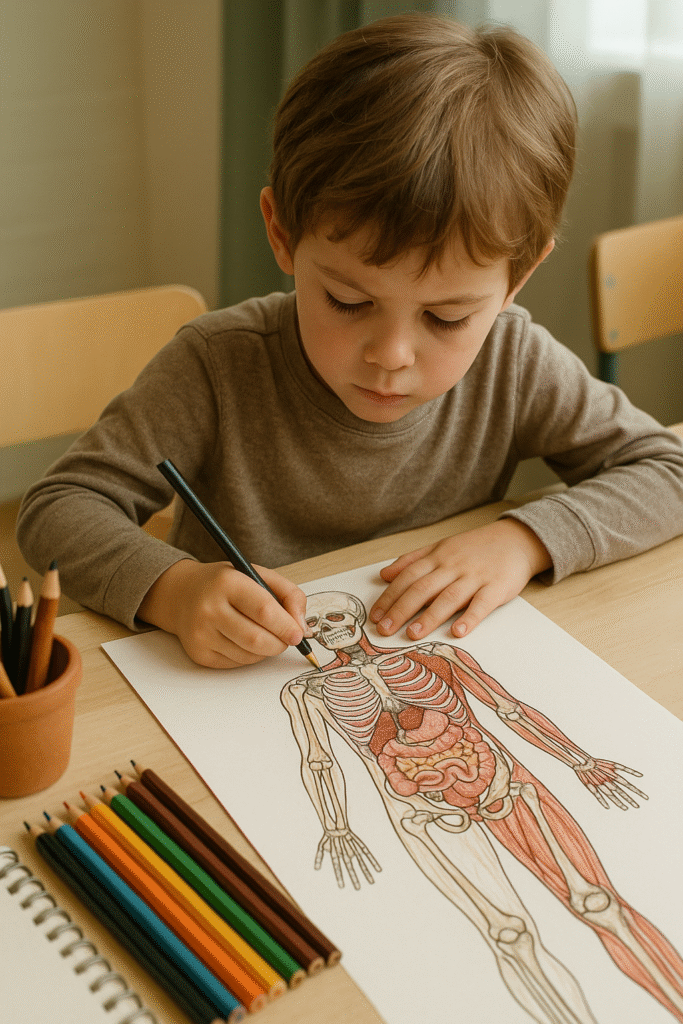
When children pick up a crayon and create their first scribbles, they’re doing far more than making pretty pictures. They’re developing foundational skills that will serve them throughout their lives, particularly in fields that demand precision, creativity, and problem-solving. From the architect visualizing complex structures to the surgeon performing delicate procedures, the seeds of professional success are often planted in childhood art education.
Art education creates a unique learning environment where observation meets imagination, patience intersects with creativity, and visual thinking develops alongside analytical skills. These aren’t just beneficial extras in a child’s education—they’re essential building blocks for careers in design, architecture, engineering, and medicine.
Observation & Detail: Training the Eye for Precision
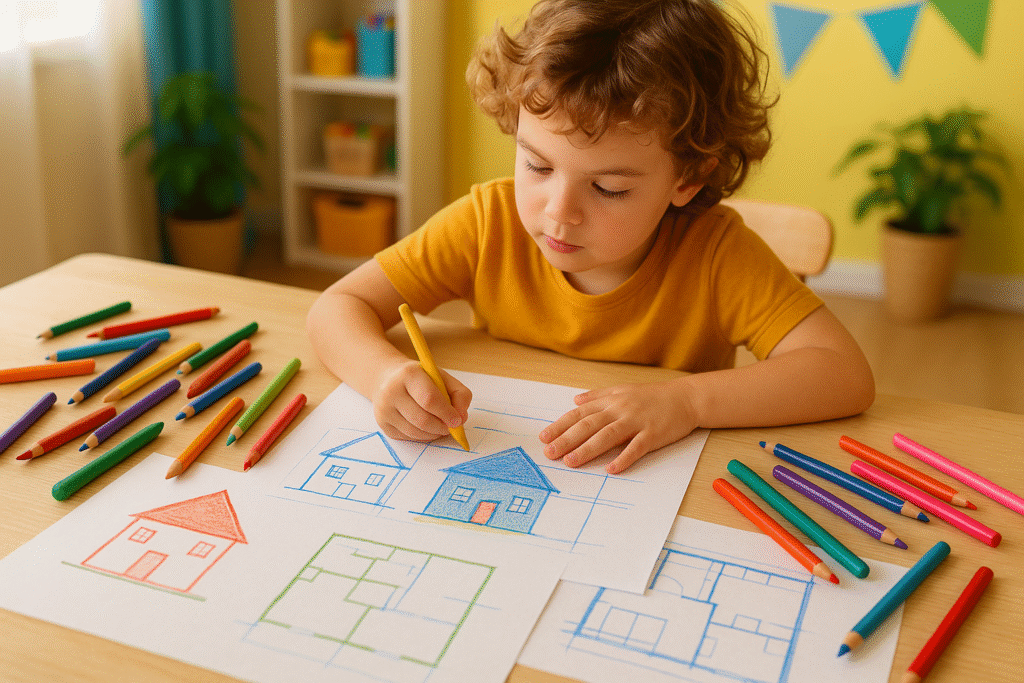
One of art’s most powerful gifts to developing minds is the enhancement of observational skills and attention to detail. When children engage in drawing activities, they learn to slow down, observe carefully, and notice subtleties that others might miss. This skill proves invaluable in professional fields where precision matters.news.stanford+1
Stanford researchers have discovered that children’s drawings contain rich information about their understanding of the world, with machine learning analysis revealing that improvement in drawing ability reflects changes in how children think about objects. This cognitive development through visual observation creates a foundation that serves future professionals exceptionally well.news.stanford
In architecture, practitioners must visualize structures in three dimensions, understand proportions, and notice how light, shadow, and form interact. These skills directly trace back to childhood experiences with drawing and sketching, where children learn to observe spatial relationships and translate what they see onto paper.
For future medical professionals, this attention to detail becomes crucial for patient observation and diagnostic skills. Medical schools increasingly recognize that visual literacy—”the capacity to identify and analyze facial features, emotions, and general bodily presentations”—can be enhanced through art education. Studies show that visual arts training helps medical students develop better observation skills, pattern recognition abilities, and diagnostic acumen.journalofethics.ama-assn+2
Art education improves children’s focus and concentration as they learn to pay attention to details, observe forms and colors, and pursue their creative ideas from beginning to end. This prolonged attention practice transfers to other tasks, improving their ability to concentrate in numerous areas of life.
Visualization & Imagination: Building 3D Thinking Skills
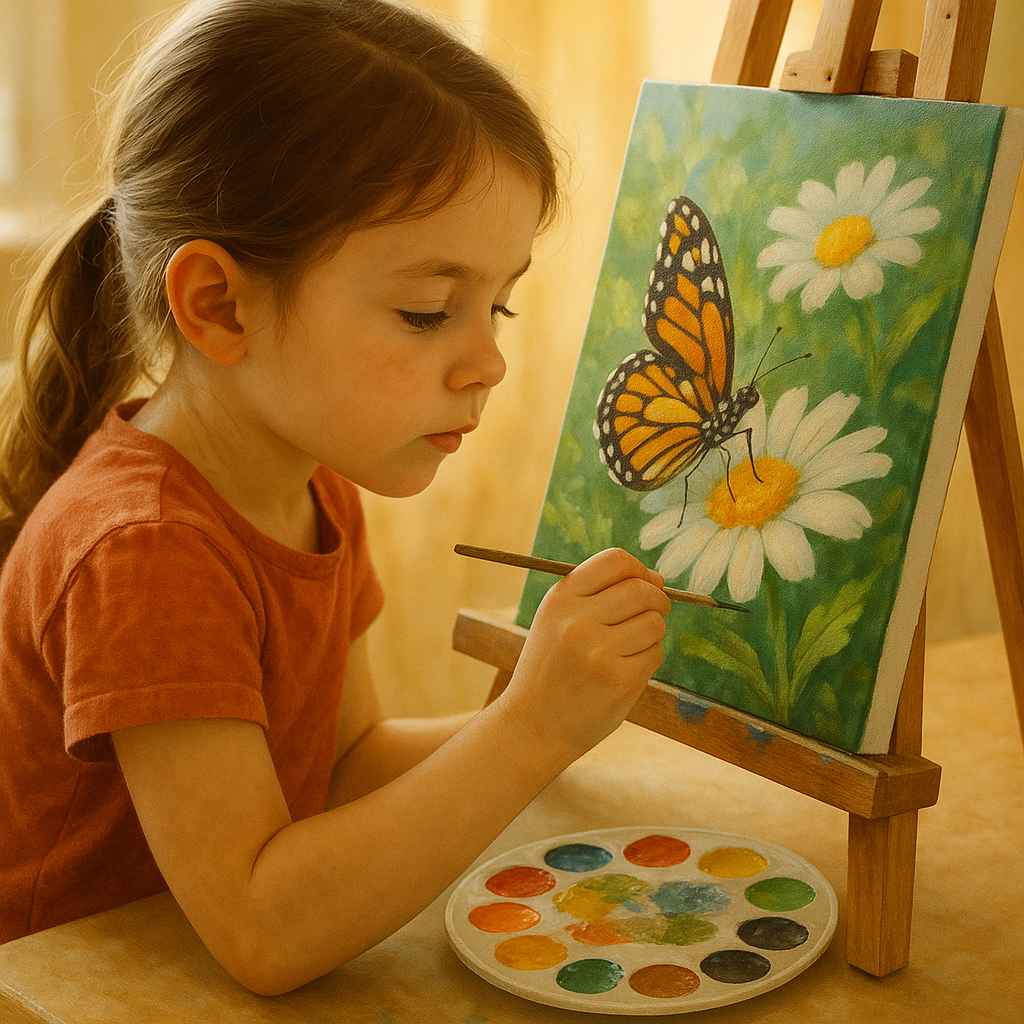
The ability to visualize in three dimensions is fundamental to success in design, architecture, and engineering. Art education naturally develops this spatial reasoning through activities that require children to imagine, manipulate, and represent objects in space.gastem.pixel-online+1
Drawing activities help students learn quicker and more effectively by developing spatial intelligence, which is a crucial attribute of successful STEM professionals. When children engage in sketching, they’re not just creating images—they’re developing the mental capacity to rotate objects in their minds and understand complex spatial relationships.youscience+1
Engineering programs increasingly recognize the importance of drawing skills for design thinking. Universities now offer courses specifically focused on “Drawing Skills for Design Thinking,” recognizing that hand drawing skills can unlock and translate creative thoughts into actions and guide collaborative dialogue. These skills help students understand spatial relationships between humans and objects, and natural and built environments.hbook.westernsydney+1
Research shows that children with strong spatial visualization aptitudes can take 2D representations, such as illustrated instructions or blueprints, and create 3D models in their minds. This ability becomes essential for architects designing buildings, engineers creating mechanical systems, and doctors understanding anatomical structures.youscience
Art also encourages pattern recognition, as children learn to identify visual patterns, symmetry, and structure while drawing or painting. This kind of visual-spatial thinking enhances their ability to solve problems in other areas, such as mathematics and science.crestar
Discipline & Patience: The Foundation of Professional Excellence
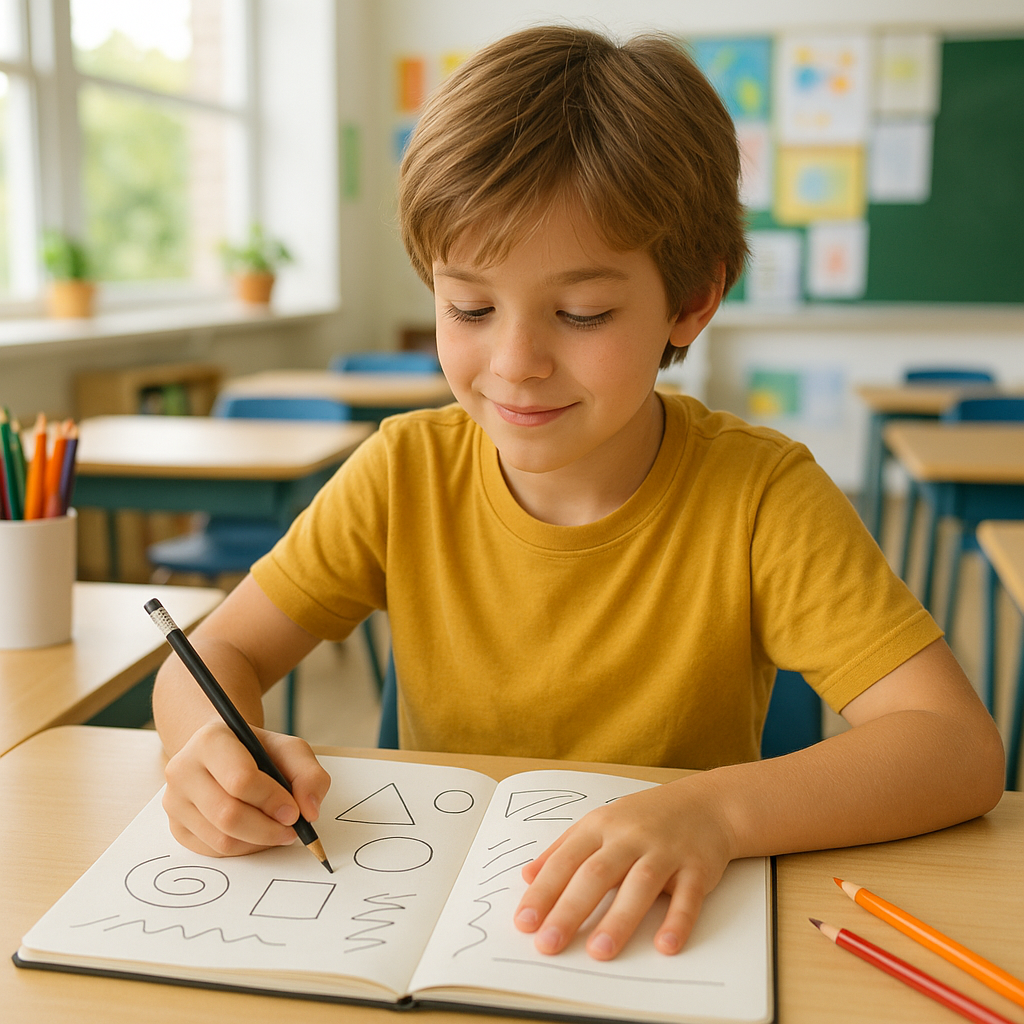
Perhaps one of art’s most underappreciated contributions to professional development is the cultivation of discipline and patience. Creating art requires sustained attention, careful planning, and the willingness to work through challenges—qualities essential in demanding professional fields.
Art helps children concentrate and work in a more disciplined way, as artistic projects require patience and attention to detail. These skills often translate into better performance in other subjects and professional endeavors. The process of learning an instrument, mastering a painting technique, or completing an intricate drawing teaches children that excellence requires time, dedication, and sustained effort.
This patience development has far-reaching implications. In medicine, surgeons must develop exceptional hand-eye coordination and the patience to perform lengthy, precise procedures. Research shows that fine motor skills and manual dexterity, often developed through childhood art activities, are essential for surgical success.
The neuroscience behind patient practice reveals that activities requiring sustained attention and delayed gratification strengthen the prefrontal cortex—the brain region responsible for executive function, emotional regulation, and long-term planning. When children work on detailed art projects that unfold over days or weeks, they’re literally building brain capacity for patience and self-control.
Traditional art forms like embroidery teach particularly valuable lessons in patience. Each stitch requires attention, precision, and commitment to a larger vision that emerges slowly over time. Children learn that beautiful results come from accumulated small efforts rather than dramatic breakthroughs—a lesson that proves invaluable in professional fields requiring long-term dedication.
Creative Problem Solving: Innovation Through Artistic Thinking
Art education excels at developing creative problem-solving skills by presenting children with challenges that have no predetermined right answers. Creating art helps children develop problem-solving skills by presenting them with challenges that require innovative solutions. Whether choosing colors, arranging shapes, or planning a composition, children constantly analyze and make decisions during their art projects.
This creative problem-solving approach proves essential in professional fields. Engineering, in particular, benefits from design thinking approaches that originated in artistic practices. Modern engineering education emphasizes sketching skills because drawing enables abstraction, embraces ambiguity, facilitates exploration and unexpected outcomes, and provokes creativity through reflection and reinterpretation.
In architecture, creative problem-solving becomes essential for addressing complex design challenges while balancing aesthetic, functional, and structural requirements. The ability to think visually and approach problems from multiple angles—skills developed through art education—proves invaluable in professional practice.
Medical education increasingly recognizes the value of creative thinking for diagnostic challenges and treatment innovations. Art-based activities promote adaptability, innovation, and academic achievement by encouraging students to approach problems from diverse perspectives.
Creative thinking in professional settings drives innovation, enhances problem-solving capabilities, improves collaboration, and provides competitive advantages. Organizations that prioritize creativity often gain significant competitive edges by developing innovative solutions and staying ahead of industry trends.
Confidence & Communication: Visual Literacy for Professional Success
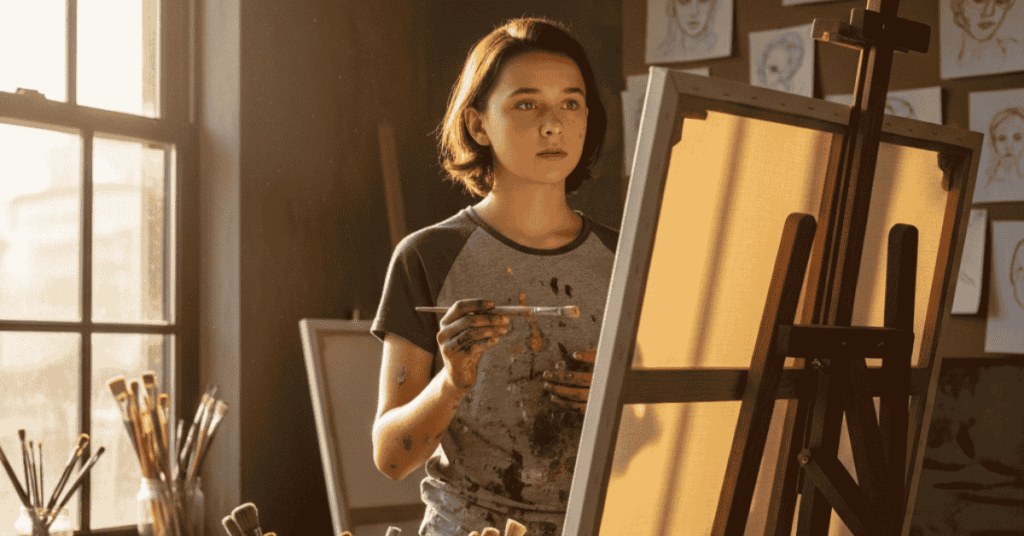
Art education builds confidence and communication skills that prove essential in professional presentations, technical drawings, and visual communication. When children create art, they develop pride in their work and gain confidence in their abilities to create something meaningful. This confidence extends beyond artistic creation to general self-assurance in expressing ideas and presenting work.
Visual communication skills developed through art education become particularly valuable in professional fields requiring technical drawing, diagrammatic representation, and visual presentation of complex ideas. Engineering drawings, architectural blueprints, and medical diagrams all require the visual literacy skills first developed through childhood art education.
Art provides children with alternative ways to express thoughts and ideas that might be difficult to verbalize. This non-verbal communication ability proves valuable in professional settings where complex concepts must be conveyed clearly to diverse audiences. The ability to create compelling visual presentations, design effective diagrams, and communicate ideas through visual means becomes increasingly important in modern professional environments.
Research shows that arts integration in STEM subjects leads to improved problem-solving skills, as students learn to approach challenges from creative perspectives. Students who participate in art education often show improved performance in subjects like mathematics, science, and reading, developing discipline, focus, and perseverance that translate to better professional outcomes.aachiglobalschool+1
Transferable Skills: From Art Room to Professional Success
The skills developed through art education prove remarkably transferable to professional success across various fields. Individuals from arts backgrounds possess diverse transferable skills including creativity, communication, adaptability, collaboration, and problem-solving abilities.linkedin+1
Creative thinking enables organizations to identify new opportunities, embrace challenges, promote innovation, improve collaboration, and enhance competitive advantage. Companies increasingly value employees with creative backgrounds because they bring fresh perspectives, innovative approaches, and strong problem-solving capabilities to complex professional challenges.indeed+1
Art graduates successfully transition into mainstream careers in media, marketing, public relations, communications, management, and education. The critical thinking, analytical skills, and visual literacy developed through art education prove valuable across industries, not just in traditional art careers.nec
Studies demonstrate that students who participate in four years of arts and music classes score an average of 92 points higher in STEM subjects than their counterparts with only one year of art education. This academic advantage translates into better preparation for demanding professional programs and careers.gastem.pixel-online
Conclusion
The path from childhood sketches to professional success illustrates art education’s profound impact on career development. Whether a child grows up to design sustainable architecture, engineer innovative solutions, or perform life-saving surgery, the foundational skills developed through art education—observation, visualization, patience, creative problem-solving, and visual communication—remain essential to their success.
Art education provides children with more than creative expression; it builds cognitive capabilities, develops essential life skills, and creates pathways to professional excellence. In our increasingly complex and visual world, these skills become more valuable than ever. By investing in comprehensive art education for children, we’re not just nurturing creativity—we’re developing the architects, engineers, doctors, and designers who will shape our future.
The evidence is clear: when we give children crayons and encourage them to create, we’re providing them with tools that extend far beyond the art room. We’re helping them develop the skills, confidence, and innovative thinking that will serve them throughout their professional lives. From sketches to success, art education remains one of the most powerful investments we can make in our children’s futures.
✨ At Konsult Creative, we believe every child has the potential to grow into a future innovator. By nurturing their artistic abilities today, we open doors to limitless possibilities tomorrow.
👉 Enroll your child in our Art & Design programs and help them build the skills that go beyond creativity — shaping them into future leaders in design, architecture, engineering, and medicine.
